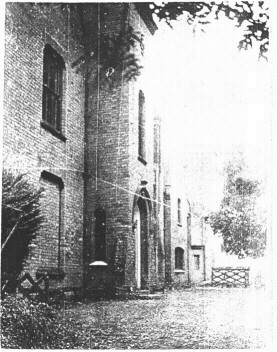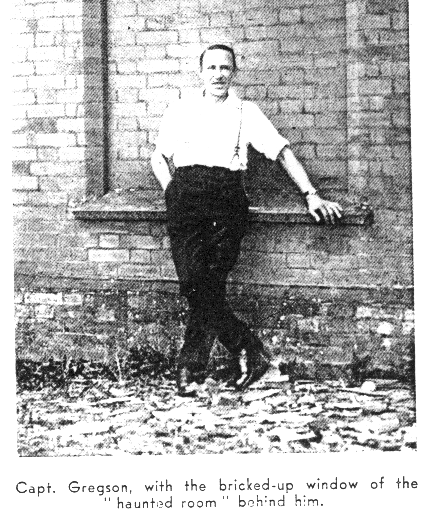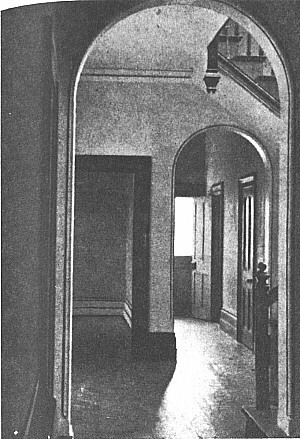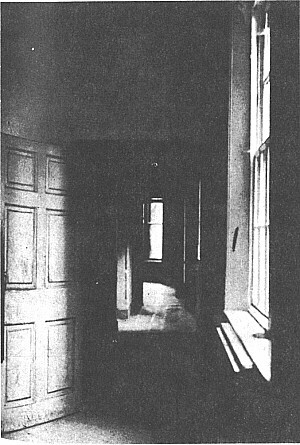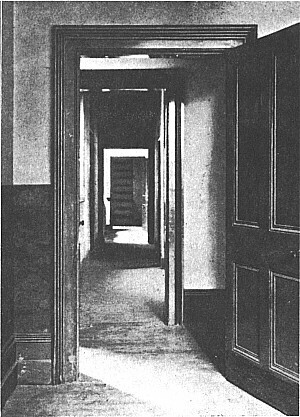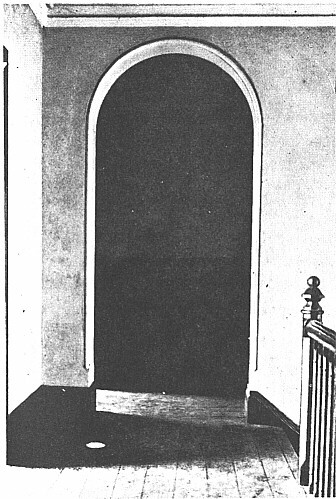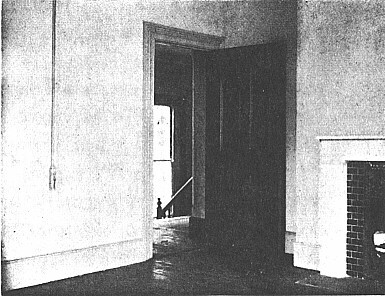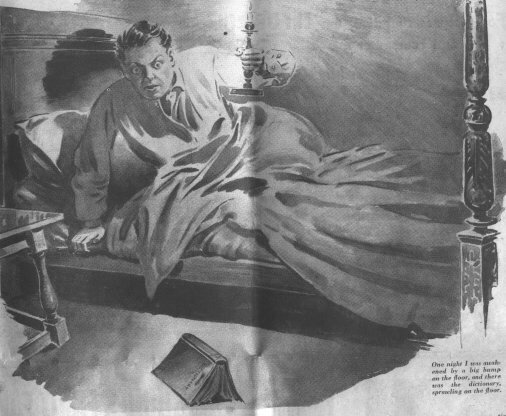|
This page addresses some of P. Shaw Jeffrey's experiences at Borley Rectory. To my knowledge, it was never mentioned which room in the Rectory that P. Shaw Jeffrey stayed in as a summer guest of Harry Bull, his college friend. I believe that Harry Bull grew up (and also died) in room 7 as indicated on the Sydney H. Glanville floor plan, room 7 being one of the better bedrooms in the Rectory in my opinion. I think that Harry Bull enticed P. Shaw Jeffrey to stay at the Rectory in the summer of 1885-86 by offering his room to Mr. Jeffrey. If this presumption is correct then the incidents concerning the French dictionary and the moved boots likely took place in room 7. (The French dictionary had dropped to the floor from out of nowhere one night. The boots were mysteriously moved from the floor to the top of the wardrobe on another night.) The dictionary and the boots proved to be one of my more satisfying discoveries with respect to trying to make sense out of the grand scheme of the puzzle of the ghost nun's charades. I was drawing correspondences between other charades when it hit me how the dropped dictionary and the moved boots are arguably part of the same charade. Given some disembodied spirit had choreographed these incidents, I was stunned by the creativity involved. I want to tell you everything I know about this particular charade and I want to do it right. You can go straight to the particulars of this charade if you're already familiar with the inside of the Rectory by clicking here. Or you can simply continue reading and take a picture tour from the road to room 7 to get a rough idea of P. Shaw Jeffrey's general impressions of the Rectory that summer. Shall we... |

|
We're going to go inside the Rectory in a short while to see room 7, the "haunted room". But before we do so I have a few things for you to consider. Note that ghosts were sighted outside the Rectory as well as inside and some of you might have some reservations about getting too close to places where a ghost was spotted. And while I'm getting better at remembering where ghosts were seen at, if I forget to warn you about a particular spot that you're alreading standing at, well...sorry. As a matter of fact, I don't believe there is any "neutral" way to approach the Rectory. Indeed, in a moment we're going to go through the gate which appears to the left of the bottom of the big tree in the middle of the picture. This was the Rectory's east gate. Note that the ghost nun was occasionally seen near one of the gate posts, seemingly leaning on it as if withdrawn and sad. I don't remember which post, if any, was mentioned. Although logic would dictate that we simply pass directly between the posts to avoid bumping into air, you should also know that Reverend Smith and his wife reported a phantom coach that came up the road and stopped right between the posts. But we'll deal with this. For right now let's talk about today's project. As I have already mentioned, we're going to be heading for room 7, known as the "haunted room". We can see one of the two windows of room 7 in the above photograph. It is the leftmost window visible on the1st floor (the second level). room 7 must have been one of the nicer bedrooms in the Rectory as it was in the wing where the Bull Family actually lived. It was also second in size in this wing only to the master bedroom next to it. I believe that Room 7 belonged to Harry Bull, Rev. Henry Bull's oldest child and son. It is important to note that I think that Harry was probably asked to occasionally give up his room as a friendly gesture for special guests and sleep somewhere else. I believe that one of those guests was a college student friend of Harry's, P. Shaw Jeffrey. If this assumption is correct then room 7 is the room where the famous French dictionary dropped to the floor from out of nowhere one summer night. The dictionary episode is exciting for me because it was the first incident that I started reading things into beyond what the Borley Rectory books mention about it. But for now, let's wind our way through the Rectory to room 7 and I'll continue the spook stories about it there. Let's proceed through the gate and follow the drive to the Rectory's front door. Also, regardless that this little walk is going to take us uphill a bit let's proceed quickly through the gate and up the drive. We'll stop just before we reach the corner of the Rectory so that we can catch our breath. |
